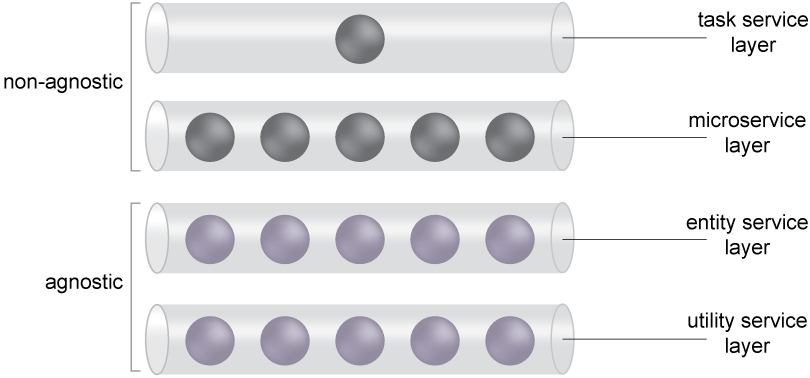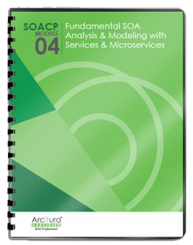SOA Patterns > Foundational Inventory Patterns > Service Layers
Service Layers (Erl)
How can the services in an inventory be organized based on functional commonality?

Problem
Arbitrarily defining services delivered and governed by different project teams can lead to design inconsistency and inadvertent functional redundancy across a service inventory.
Solution
The inventory is structured into two or more logical service layers, each of which is responsible for abstracting logic based on a common functional type.
Application
Service models are chosen and then form the basis for service layers that establish modeling and design standards. See the Service Models and Layers page for more details.
Impacts
The common costs and impacts associated with design standards and up-front analysis need to be accepted.
Principles
Architecture
Inventory, Service

Related services are designed according to service models, thereby establishing logical service layers. In this case, the service inventory is structured with three service layers that correspond to the three abstraction patterns described in Chapter 7. (Note the pipe symbol is used to represent a service layer in this book.)
Related Patterns in This Catalog
Canonical Expression, Domain Inventory, Enterprise Inventory, Entity Abstraction, Metadata Centralization, Microtask Abstraction , Process Abstraction, Utility Abstraction
Related Patterns in Other Catalogs
Related Service-Oriented Computing Goals
Increased Business and Technology Alignment, Increased Federation, Increased Organizational Agility, Reduced IT Burden
This pattern is covered in SOACP Module 4: Fundamental SOA Analysis & Modeling with Services & Microservices.
For more information regarding the SOA Certified Pofessional (SOACP) curriculum,
visit www.arcitura.com/soa.
This page contains excerpts from:
SOA Design Patterns by Thomas Erl
(ISBN: 0136135161, Hardcover, Full-Color, 400+ Illustrations, 865 pages)
For more information about this book, visit www.arcitura.com/books.

